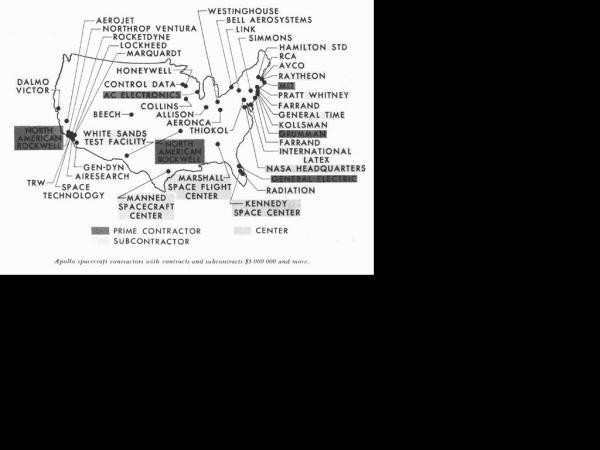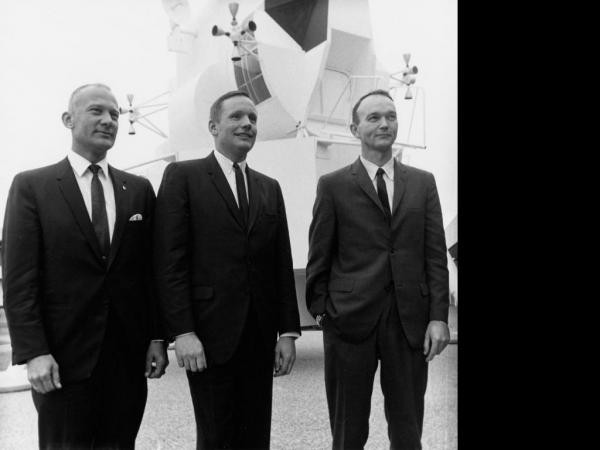Christina Ferwerda's collections
Destination Moon: NASA Art
<p>Established in 1962, the NASA Artists Cooperation Program gave several artists unrestricted access to several NASA facilities. The goal was to communicate the emotional tone and the cultural significance of space exploration.</p>
<p>This collection uses the "Connect Extend Challenge" visible thinking strategy developed by Project Zero at Harvard University. This strategy encourages students to make connections between new ideas and prior knowledge. It also encourages them to make a personal connection to an artwork or topic.</p>
<p><a href="https://airandspace.si.edu/exhibitions/destination-moon"></a>This lesson helps teachers create connections between works of art and the study of space exploration, and to help teachers use art as a force for developing students’ critical thinking. <br /></p>
<p>Observe and discuss the first image as a class. Use the "Connect Extend Challenge" to discuss the image as a class. Ask the following: </p>
<ul><li>How is the artwork or object <strong>connected</strong> to something you know about?</li><li>What new ideas or impressions do you have that <strong>extended</strong> your thinking in new directions?</li><li>What is <strong>challenging</strong> or confusing? What do you wonder about?</li></ul><p>Provide any background knowledge that enhances the conversation, using the metadata information about the NASA Artists Cooperation Program. </p>
<p>Next, divide the students into 4 groups. Have them use the same questions to discuss one of the 4 images that deals the Apollo 11 launch. Wrap-up the discussion by having each group share out key thoughts and responses. Repeat the same process with the 4 images that represent Mission Control (note, Mission Control Images are from a selection of Apollo missions). </p>
<p>Finally, students should choose one of the final 4 images to investigate, using the "Connect Extend Challenge" to guide their exploration. Their work could be shared verbally in a paired group, or written as a personal essay. </p>
<p><br /></p>
 Christina Ferwerda
Christina Ferwerda
13
Destination Moon: Suiting Up for Space
<p>How did the space suit come to look the way it does? From the United States Navy's Mark IV pressure suit to the Apollo AL7 model, this collection explores its evolution. Investigate the hotspots in each image, and watch the videos included. Try to put yourself in the place of an astronaut - what are their needs, and wants? </p>
<p>Next, investigate the roadmap for the developing Mars One mission. How will a Mars mission differ from the Mercury, Gemini, and Apollo programs?</p>
<p>After exploring the collection, see if you can redefine the "space suit" problem for the next generation of space explorers - specifically those going to Mars. Will astronauts need more mobility? More protection? What insights did you gain from looking at this collection? Write down the problem and any critical information gained. </p>
<p>Additional Activities: </p>
<p>1. Come up with as many solutions as you can to the defined problem. Don't worry about testing them all - let your imagination run wild - and challenge yourself to come up with lots of different solutions. </p>
<p>2. Talk with a partner to see which solution has the most merit between you both. Refine your idea based on this conversation. </p>
<p>Finally, prototype! Use simple, inexpensive materials to model your design. </p>
 Christina Ferwerda
Christina Ferwerda
7
Destination Moon: The Mighty Saturn V
<p>The Saturn V is the most powerful rocket flown to date, but how did it actually work? this collection investigates the three stages of the Saturn V rocket, as well as the Instrument Unit. By making comparisons between the engines and computer located on the Saturn V and familiar technologies, students will gain a better understanding of the power and function of the mighty Saturn V. </p>
<p>This collection also uses and familiarizes students with several Earth and Space science terms. When exploring this collection, discuss and provide students with the following vocabulary list: </p>
<p>Thrust, stage, orbit, velocity, combustion, vacuum</p>
 Christina Ferwerda
Christina Ferwerda
9
Destination Moon Crew Guide: Apollo 11 Commander Neil Armstrong
<p>This topical collection explores the life of Mission Commander Neil A. Armstrong; it includes images, artifact images, video and websites. Through browsing this collection, students will learn influential aspects of Armstrong's life, in order to appreciate how his work as a pilot and astronaut impacted his personal and private affairs.<br /></p>
<p>This collection is inspired by the Unveiling Stories thinking strategy introduced by Harvard's Project Zero, which invites students to reveal multiple layers of meaning in stories: </p>
<ul><li>What is the story?</li><li>What is the human story?</li><li>What is the world story?</li><li>What is the new story?</li><li>What is the untold story?</li></ul><p>Have students look at each image, video or resource, and read its descriptions. Ask students to think about or respond to any quiz questions included.<br /></p>
<p>Tags: moon, moon landing, Apollo 11, Apollo XI, Armstrong, space, space race, astronaut</p>
<p><br /></p>
 Christina Ferwerda
Christina Ferwerda
11
Destination Moon Crew Guide: Apollo 11 Command Module Pilot Michael Collins
<p></p>
<p>This topical collection explores the life of Command Module Pilot Michael Collins; it includes images, artifact images, and websites. Through browsing this collection, students will learn about Collins' life, in order to appreciate how his work as a pilot and astronaut impacted his personal and private affairs.</p>
<p>This collection is inspired by the Unveiling Stories thinking strategy introduced by Harvard's Project Zero, which invites students to reveal multiple layers of meaning in stories: </p>
<ul><li>What is the story?</li><li>What is the human story?</li><li>What is the world story?</li><li>What is the new story?</li><li>What is the untold story?</li></ul><p>Have students look at each image, video or resource, and read its descriptions. Ask students to think about or respond to any quiz questions included. </p>
<p>Tags: moon, moon landing, Apollo 11, Apollo XI, Aldrin, space, space race, astronaut</p>
 Christina Ferwerda
Christina Ferwerda
8
Destination Moon Crew Guide: Apollo 11 Lunar Module Pilot Buzz Aldrin
<p>This topical collection explores the life of Lunar Module Pilot Buzz Aldrin; it includes images, artifact images, video and websites. Through browsing this collection, students will learn about Aldrin's life, in order to appreciate how his work as a pilot and astronaut impacted his personal and private affairs.
</p>
<p>This collection is inspired by the Unveiling Stories thinking strategy introduced by Harvard's Project Zero, which invites students to reveal multiple layers of meaning in stories: </p>
<ul><li>What is the story?</li><li>What is the human story?</li><li>What is the world story?</li><li>What is the new story?</li><li>What is the untold story?</li></ul><p>Have students look at each image, video or resource, and read its descriptions. Ask students to think about or respond to any quiz questions included.</p>
<p>Tags: moon, moon landing, Apollo 11, Apollo XI, Aldrin, space, space race, astronaut</p>
<p><br /></p>
<p><br /></p>
 Christina Ferwerda
Christina Ferwerda
6





